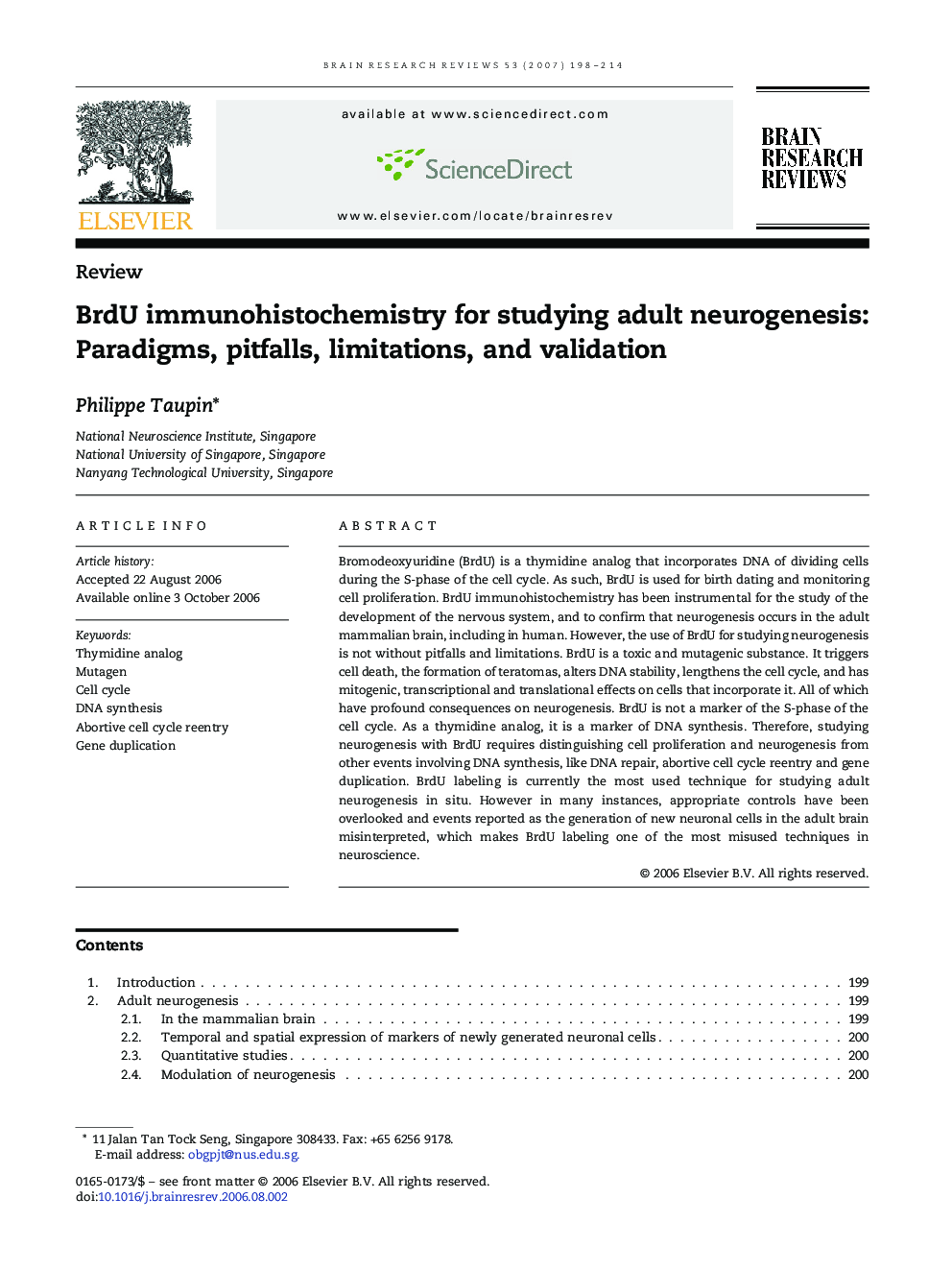| کد مقاله | کد نشریه | سال انتشار | مقاله انگلیسی | نسخه تمام متن |
|---|---|---|---|---|
| 4334035 | 1294764 | 2007 | 17 صفحه PDF | دانلود رایگان |

Bromodeoxyuridine (BrdU) is a thymidine analog that incorporates DNA of dividing cells during the S-phase of the cell cycle. As such, BrdU is used for birth dating and monitoring cell proliferation. BrdU immunohistochemistry has been instrumental for the study of the development of the nervous system, and to confirm that neurogenesis occurs in the adult mammalian brain, including in human. However, the use of BrdU for studying neurogenesis is not without pitfalls and limitations. BrdU is a toxic and mutagenic substance. It triggers cell death, the formation of teratomas, alters DNA stability, lengthens the cell cycle, and has mitogenic, transcriptional and translational effects on cells that incorporate it. All of which have profound consequences on neurogenesis. BrdU is not a marker of the S-phase of the cell cycle. As a thymidine analog, it is a marker of DNA synthesis. Therefore, studying neurogenesis with BrdU requires distinguishing cell proliferation and neurogenesis from other events involving DNA synthesis, like DNA repair, abortive cell cycle reentry and gene duplication. BrdU labeling is currently the most used technique for studying adult neurogenesis in situ. However in many instances, appropriate controls have been overlooked and events reported as the generation of new neuronal cells in the adult brain misinterpreted, which makes BrdU labeling one of the most misused techniques in neuroscience.
Journal: Brain Research Reviews - Volume 53, Issue 1, January 2007, Pages 198–214